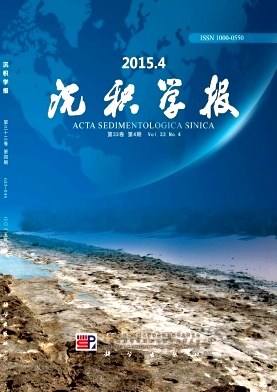Spatial Distribution Characteristics and Environmental Influencing Factors of Pollen Assemblage of Lake Surface Sediments from Lake Hulun
doi: 10.14027/j.cnki.cjxb.2015.04.013
- Received Date: 2014-09-15
- Rev Recd Date: 2014-12-01
- Publish Date: 2015-08-10
-
Key words:
- Lake Hulun /
- surface sediment /
- pollen spatial distribution /
- environmental impact factors /
- ordination analysis
Abstract: The spatial characteristics of pollen assemblages of the lake surface sediments and associated dynamics on deposition, perseveration and transport process is important to the paleoclimate and paleoenvironment reconstruction. Lake Hulun, which is situated in the northeast of China, with a lake surface area of ~2 100 km2 and an average water depth of 3 m, and four inflow rivers in the north, east and the south, provide an ideal site for such researches. In addition, the widely varied lake basin (the differences of the water depth between each sample site) and the changed vegetation pattern around the lake, provide chances to explore the impact of the resuspension and redeposition process, the influencing of drift and the influence of non-zonal vegetation to the pollen assemblage in the lake. Investigations on pollen assemblages of 29 surface sediment samples throughout Lake Hulun were carried and ordination analysis on the pollen percentage data and environmental data were conducted to disclose the spatial characteristics of pollen assemblages and the potential dynamics between the pollen data and the environmental factors. Specifically, 29 lake surface sediment samples (top 2 cm sediment) were collected at a spatial interval of 5×5 minutes along a snake line in the lake and three types of environmental impact factors including water depth (in relation to resuspension and redeposition), the distance to the rivers mouth (in relation to river transportation process) and the distance to the east coast of the lake (in relation to the drift caused by dominant wind in warm season and the influence of the non-zonal vegetation in the east of the lake) were constructed. Ordination analysis including principal component analysis (PCA) and redundancy analysis (RDA) were selected according to the data type of the pollen data (i.e., liner model as indicated by the gradient length of the detrended correspondence analysis, DCA) and were conducted on the pollen data and environmental data. As suggested by the result of the PCA, remarkable spatial differentiations of the pollen assemblage could be distinguished. That is, the pollen percentages of Chenopodiaceae and Pinus are high in the sample sites in the eastern littoral area, while the pollen percentages of Betula and Artemisia are high in the sample sites in the central and western profundal area. As revealed by the results of RDA, the distance to the east coast (D5), the distance to the Xinkai River mouth (D2) and the water depth (WD) are statistically correlated to the spatial patterns of pollen assemblages and are responsible for the spatial differentiations of pollen assemblages. The distance to the east coast (D5), on behalf of the influence of the drift caused by the dominant wind and the influence of the non-zonal halophytic vegetation developed in the east shore of Lake Hulun, is the most important environmental factor correlated to the spatial difference of pollen assemblage. The non-zonal halophytic vegetation developed in the east shore of Lake Hulun make a contribution to the high content of Chenopodiaceae in the eastern littoral area, while the drift caused by the dominant west-southward wind lead to the high Pinus percentages in the eastern littoral area.
| Citation: | LIU LiNa, WANG Wei, MA YuZhen, LI YanYan, JIANG YaJuan, HE Jiang. Spatial Distribution Characteristics and Environmental Influencing Factors of Pollen Assemblage of Lake Surface Sediments from Lake Hulun[J]. Acta Sedimentologica Sinica, 2015, 33(4): 744-753. doi: 10.14027/j.cnki.cjxb.2015.04.013 |






 DownLoad:
DownLoad: